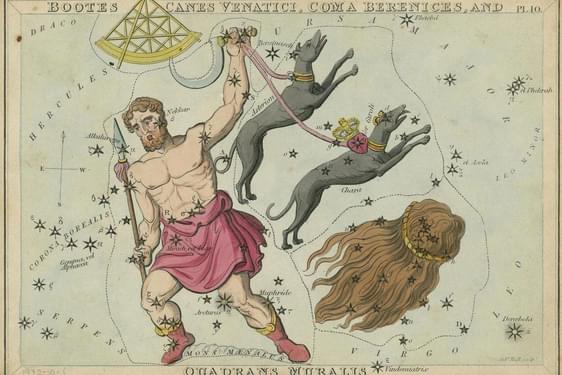
History of the typewriter
News Story
The typewriter helped revolutionise the world of work and change the lives of working women in particular. It helped them launch their own businesses at a time when female employers were rare and became a vital weapon in the fight for women’s suffrage. Typewriters inspired novelists and artists. American writer Mark Twain was among the first to use what he called a “new-fangled writing machine”.
Despite being erased from many offices by the rise of computers, the typewriter has remained a beloved design icon which is still in use today.
Early days
Inventors across Europe and America experimented with writing machines throughout the 19th century. Many of these devices were made for people with visual and hearing impairments. Instead of a keyboard, the operator turned a dial to choose a letter and then pressed a lever or key to print it on paper. They may not look like our idea of a typewriter, but they show there was a growing interest in devices that could print individual documents.
Versions of these Columbia typewriters were commercially successful as they were a fraction of the price of a keyboard machine and worked fine for someone at home typing a few letters. Museum reference T.1949.3.1.
Typewriters in Scotland
Keyboard typewriters in a form we would recognise today were first sold by American firm E. Remington & Sons in the 1870s. The first shipments arrived in Scotland in 1876.
They were luxury devices which would have been out of reach for many people at the time. They cost the equivalent of half the average annual salary.
While some people were sceptical about the new technology, others embraced it eagerly. Sewing machine salesman John J Deas was an early enthusiast. Adverts for his business in Dundee and Aberdeen claimed the typewriter would "do for the ink-bottle and the pen, what the sewing machine has done for the needle".

Scottish typewriter salesman John J Deas with a Caligraph typewriter, c.1893
The final decade of the 19th century saw a huge boom in the demand for typewriters. Organisations began to realise their value in streamlining and modernising office work. From just two or three dealers in Scotland, the number of businesses selling them soared. With more firms realising their benefits, the opportunity arose for people to train as professional typists.
Thousands of typists took up new typing positions in businesses and government institutions. This transformed traditionally male working environments. The tradition of employing female telegraph operators helped it be seen as a suitable job for women. Typing jobs offered better pay and safer working conditions compared to other work available to women. However, they were often paid less than their male colleagues and were expected to leave when they married.

Advertisement from the Glasgow Post Office directory 1897-1898.
Made in the U.K.
The first typewriter brands were American or European and shipped to the UK. By the 1890s there were several British makers competing with their own brands.
Following the Second World War, both Italian firm Olivetti and American company Remington Rand opened factories in Glasgow.
Made by Maskelyne Typewriter & Manufacturing Company Ltd, London, England, c.1893. Museum reference T.1934.193.
Olivetti opened their factory in the east end of the city. They produced stylish models such as the Lexikon 80 and the portable Lettera 22, which were seen as the cutting edge of design. Many artists, musicians, and writers used them, such as Leonard Cohen, Bob Dylan, and Sylvia Plath, with the portable Lettera 22 always a favourite. In the late 1950s, a young Alex Ferguson started as an apprentice at the Remington Rand factory. He soon abandoned this path for a more promising career in football.

Olivetti Lettera 22 portable typewriter. Museum reference SH.2001.68.1.
Storytelling
Typewriter technology advanced to include electric models, but the rise in computers saw them gradually phased out of offices. However, the unique experience of writing on a typewriter and the enduring beauty of their design mean there is still a demand for the machines.
Whatever you use – a pen, computer or typewriter – has an effect on how you write and the style you develop. And it isn’t just the process of typing that attracts users to the machines. 19th century American novelist Henry James found the noise of a Remington typewriter inspiring. For some, the typewriter focused their thinking.
There is no doubt that the effort involved in typing...does help me in keeping to the point.
Agatha Christie
The typewriter continues to be a source of inspiration for writers. In 2017, collector and actor Tom Hanks released Uncommon Type, a collection of short stories that all featured a typewriter.
Typewriters today
Although they are no longer produced in the UK, typewriters continue to fascinate people and many are going back to using them. Embraced by those who want to re-engage with the basic act of writing without the distractions of the digital world, the typewriter has become a new vehicle for creativity and expression.
Typewriters are being used by artists in many different ways. Inspired by its rhythmic sounds, The Boston Typewriter Orchestra plays music on typewriters.
For other people, the typewriter is a chance find in a charity shop or online which might inspire them to type the occasional letter. A message that has taken time to create is of lasting value to both writer and recipient. Over time, the typewritten letter has gone from being an impersonal document to a highly personal and thoughtful one.


